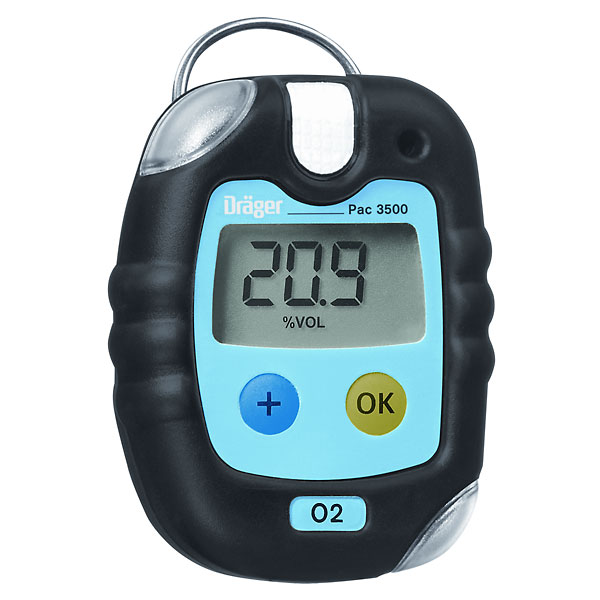

Provide training before beginning work assignments.The importance of drilling fluid treatment plans prior to encountering H 2S.Effects of H 2S on the components of the H 2S handling system (i.e., metal corrosion or fatigue).Emergency response procedures, corrective actions, and shutdown procedures.Wearing personal monitors as close as possible to the breathing zone to be most effective (e.g., above the chest or on the collar).Use and operation of all H 2S monitoring systems.Confined space and enclosed facility entry and work procedures.Wind direction awareness (windsocks) and routes of egress.Worker awareness and understanding of workplace practices and maintenance procedures to prevent exposure to H 2S.Proper use and maintenance of PPE, with demonstrated proficiency in using the PPE.Proper rescue techniques and first-aid procedures to be used in a H 2S exposure.Recognition of, and proper response to, H 2S warnings at the workplace.Proper use of the H 2S detection methods used on the site.Identification of the characteristics, sources, and hazards of H 2S.Refer to ANSI/ASSE Z390.1-2017, Accepted Practice for H 2S Safety Training Programs, when establishing the training program. Provide comprehensive training for workers in H 2S operations.Wear or place personal and area monitors in, or as close as possible to, the breathing zone. Actively monitor for H 2S gas, including both personal and area monitoring.Good planning and training programs for workers are the best ways to prevent exposure, injury, and death.Consult API standards and recommended practices, including API RP 49. Establish and follow company policies, emergency procedures, and contingency plans for personnel if H 2S is suspected or detected. The presence of H 2S should always be a concern. Even in areas where H 2S has not been seen, H 2S still may suddenly present a situation where action is required.Maintain strict diligence to prevent and control exposure. The toxic hazards associated with H 2S exposure are serious at well sites. Never rely on sense of smell for the presence of H 2S. Longer exposures to lower concentrations also have a similar desensitizing effect on the sense of smell. H 2S sometimes can be detectable by its characteristic odor however, the sense of smell cannot be relied upon to provide a warning of higher concentrations of the gas (i.e., greater than 100 ppm) because H 2S rapidly eliminates the sense of smell (due to paralysis of the olfactory nerve). Generally, industry practice uses 10 ppm as an alarm set point to warn workers of the hazard, and to evacuate the area, and the NIOSH Recommended Exposure Limit is 10 ppm. Health effects begin with prolonged exposures as low as 2 to 5 ppm – potentially resulting in nausea, tearing of the eyes, headaches, and loss of sleep. Smallest & lightest 4 gas monitor 2.2″ W x 2.55″ H x 1.02″ D, 3.The OSHA permissible exposure limit (PEL) to H 2S for general industry is 20 ppm, which is not to be exceeded at any time during an 8-hour shift, except that an exposure of 50 ppm H 2S is allowed for up to 10 minutes per 8-hour period as long as no other measurable exposure occurs during that 8-hour time period (see.The 3 LED lights will continue to flash once every 30 seconds until the non-compliance condition has been resolved. The instrument flashes it’s 3 LED lights every 30 seconds in the following conditions if the instrument has not been bump tested, or if calibration is due, or if there was a gas alarm event. Safety supervisors will appreciate the non-compliance indicator. H2S and CO are now available in a combo micro sensor. The new O2 sensor is electrochemical with a 3 to 5 year life span. If one filament gets poisoned the second filament takes over. The LEL sensor has a unique design with two active filaments in one sensor to increase it’s resistance to silicone poisoning. The GX-3R represents the latest evolution of gas detection technology utilizing a new generation of micro sensors. It simultaneously monitors and displays LEL combustibles, O2, CO (Hydrogen compensated CO also available), and H2S. The GX-3R is the worlds smallest 4 gas monitor weighing only 3.52 ounces and can comfortably be clipped within a worker’s breathing zone (2.2” W x 2.55” H x 1.02” D). Now there is a 4 gas monitor smaller than many single gas monitors. Traditionally this means only a single gas monitor would be small enough for a worker to practically wear a gas monitor ‘In the breathing zone’. Air sampling filters may be attached to the collar or lapel. OSHA defines the breathing zone as a ten inch radius around the worker’s nose and mouth, and requires that worker exposure monitoring air samples be collected in the breathing zone.


 0 kommentar(er)
0 kommentar(er)
